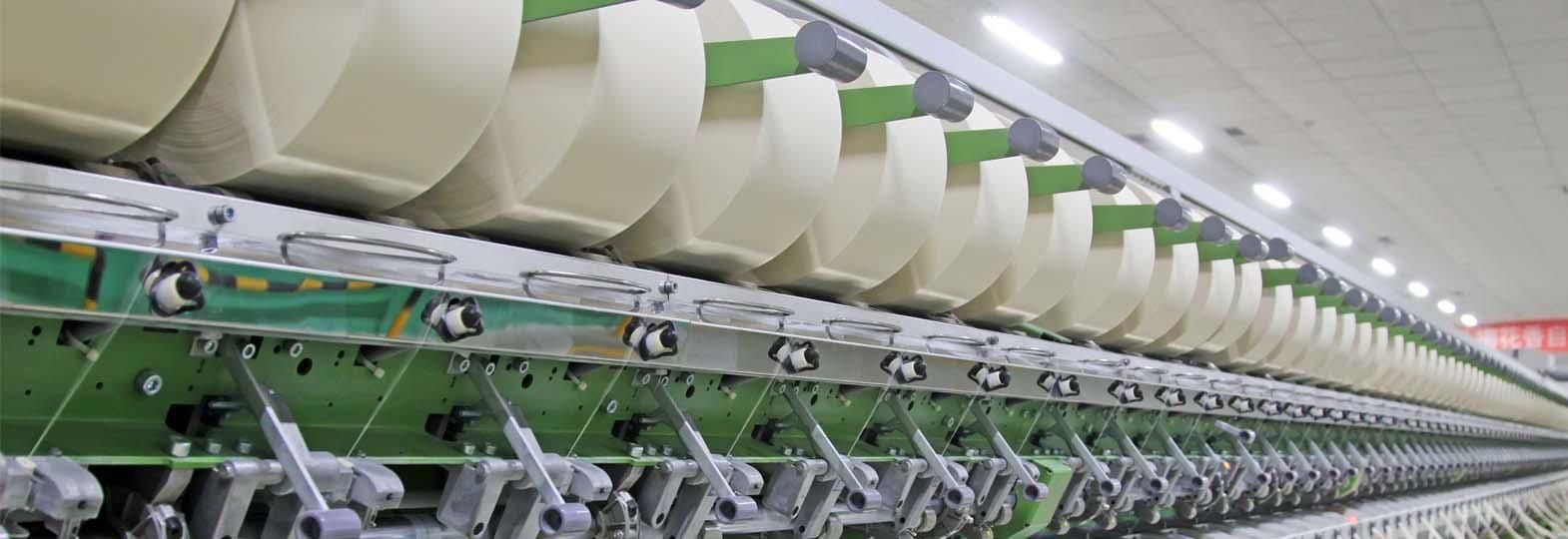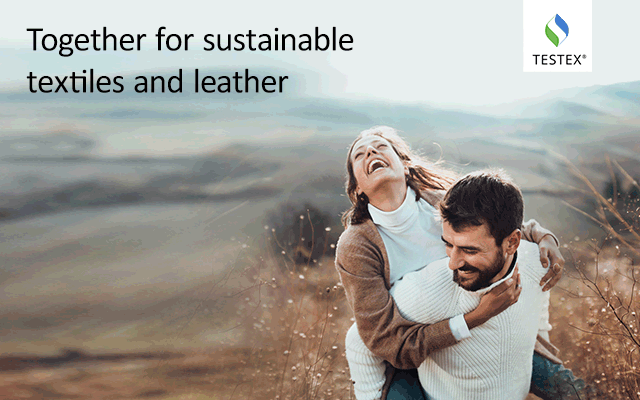Textiles is one of the largest and best functioning sectors in the Turkish economy and has accounted for an average of 7 per cent of GDP over the years and 2.9 per cent of export earnings. The Gross Domestic Product (GDP) in Turkiye was worth $819.04 billion in 2021, according to official data from the World Bank. Turkiye, the country which did not export textiles and apparel (T&A) until the year 1970, today is one of the significant suppliers in textile and apparel industry, worldwide. The country is the 7th largest exporter of textiles and apparel in the world amounting to $34.86 billion in 2022 and the third largest exporter in Europe. Since Turkiye has written a bold export story of T&A, it commands a respectable global exports share1 of 3.9 per cent.
Turkiye’s GDP and Economy
Turkiye occupies a unique geographic position, lying partly in Asia and partly in Europe. Throughout its history, it has acted as both a barrier and a bridge between the two continents. In terms of territory and population, Turkiye is among the larger countries of the region. Further, its land area is greater than that of any European state.
Turkiye is an emerging economy and is counted among newly industrial countries. The GDP of the country peaked at $1.029 trillion in 2023,2 while the nominal GDP per capita peaked to $12,489 in 20133. During the period 2018-2022, Turkiye faced a currency and debt crisis leading to decline of Turkish lira and had a significant impact on the recent decrease in the country’s nominal USD based GDP figures4. The GDP growth rate which was pegged at 11.4 per cent has now been revised5 to 5 per cent.
Turkiye is also listed as an upper middle income mixed market economy.6 According to Eurostat data, Turkiye’s GDP per capita adjusted by purchasing power standards stood at 64 per cent of the EU average in 2018.7 Turkiye’s labour force participation rate of 61.5 per cent is by far the lowest of the OECD8 states which have a median9 rate of 78 per cent.
The country is among the world’s leading producers of agricultural products, textiles, motor vehicles, transportation equipment, construction materials, consumer electronics and home appliances. The total labour force of 32,618,920 in 2021 were mostly engaged in services sector (56.2 per cent) followed by industry (27.1 per cent) and agriculture (16.7 per cent)10.
Consumption Expenditure
The consumption expenditure of households on clothing and footwear gradually went up between 2009 and 2021 in Turkiye. In 2021, household spending on clothing and footwear peaked and totalled approximately 295 billion Turkish lira. Over time, expenditure on household textiles in Turkiye has increased considerably, with approximately 605 million Turkish lira per month being spent in 201911.
FDI and Ease of Doing Business
During 2022, inward foreign direct investment (FDI) flows to Turkiye was over $12. 8 billion. Data on the value of FDI inward flows in Turkiye from 2011 to 2022 indicate fluctuations during the period. FDI increased by $1.2 billion in April 2023. The Netherlands is Turkiye’s largest investment partner and has invested $26.2 billion in various fields, including ports, logistics, real estate, construction, agriculture, aviation, food and electronics, automotive industry, and supply and medical tourism. Other countries which have invested in Turkiye are United States, United Kingdom, Austria, Germany, and Middle East countries12. UAE has invested $4.3 billion. The share of investment in Turkiye from European countries ranged from 60-87 per cent.
In recent years, Turkiye has seen improvements in the Ease of Doing Business Index. Its rank increased from 68th in 2017 to 33rd in 2020. As of 2021, it was performing better than countries like the Netherlands and Belgium (13, 14, 15). In view of the emerging and upper middle mixed economy, strong industrial performance besides a sizable consumption expenditure, Turkiye’s textiles and apparel production has not only been dominating the industrial landscape but also its exports, thus remaining an important contributor to the GDP of the country.
T&A Export Basket of Turkiye
The major exports of Turkiye are knitted, and woven apparels (HS 61, 62) followed by carpets and other textile floor coverings (HS 57), and home textiles (HS 63). Turkiye has made significant progress in apparel manufacturing and being close to Europe has been very successful in exporting to Europe and the United States. Women’s or girls’ suits, ensembles, jackets, blazers, dresses, skirts, divided skirts, trousers, and men’s or boys’ suits, ensembles, jackets, blazers, trousers, bib and brace overalls, breeches etc are the most important export products in woven clothing sector.
Two other products of Turkiye which have shown exceptionally good performance are the carpets and other floor coverings, and home textiles. Traditional Turkish handicrafts include carpet-making, rug-making, sumac, cloth-weaving, ceramics and pottery, embroidery, leather manufacture, musical instrument-making, copper work, basket-making, felt-making, weaving, woodwork, cart-making etc. As regards to carpet and other floor coverings, Turkiye is ahead of many countries such as China, India, and Pakistan. Carpet weaving has been a traditional art form practised from time immemorial and has been well integrated into the cultural fabric of the country.
Home textiles, that also adorn the export basket of Turkiye, include bed sheets, bedcovers, designed pillow covers and curtains etc. Home textiles are the 4th largest export item in the export basket.
Besides the above, the country exports fabrics knitted and coated (HS 60) etc and are the value-added product from cotton. Turkiye has been exporting products of man-made filaments; strip and the like of man-made textile materials (HS 54), man-made staple fibres (HS 55); and wadding, felt and nonwoven, special yarns, twine, cordage, ropes (HS 56) etc.
Turkiye is a very important cotton country, which is an advantage in raw materials, for the clothing industry. Turkiye is a traditional cotton producer with an average production of 800,000-900,000 tons per year. Cotton (HS 52) is not only used by the textiles industry of Turkiye for textiles production but also to carry out value addition for export. The country also partly imports cotton, about 46 per cent of which amounting to $226.40 million is exported after value addition.

The ratio of exports to imports suggests that the carpets and floor covering, fabrics knitted and coated, home textiles, and apparels are the items which are mostly produced by the country without any dependence on imports.

Major Trading Partners
As of 2016, the main trading partners of Turkiye were Germany, Russia, United Kingdom, the UAE, Iraq, Italy, and China, some of these being top in both export as well as import16. Turkiye has taken advantage of the Custom Union with European Union (EU) signed in 1995, to increase industrial production for exports, while benefiting from EU-origin foreign investment into the country.17 In addition to Customs Union, Turkiye has free trade agreements with more than 22 countries.18,19.
Export Partners
Turkish exports are well appreciated by the European trading partners such as Spain and United Kingdom, who are the top two importers. The other importing partners of Turkiye in the top 10 from Europe are the Netherlands, Italy, France, and Poland. The other countries that feature in the top 10 list of Turkish textiles exports are the United States of America, Russian Federation, Iraq, and Israel.

Turkish Imports
China is the single largest importing partner of Turkiye. United States, India, Italy, Brazil, Bangladesh, Uzbekistan, Egypt, South Korea, and Indonesia are in the top 10 list of exporters to Turkiye.

Cotton Production and Export
Turkiye has a considerable contribution in the world textile and apparel industry due to its cotton fibre growing capacity and textile and clothing manufacturing capacity. In Turkiye, cotton farming is carried out mainly in four regions: Aegean, Çukurova, Southeastern Anatolia and Antalya where climate is suitable for cotton growing. One of the important components of cotton production is growing of organic cotton. Turkiye has well established organic cotton growing regions and cotton yields are considerably high in the country. Cotton, being a major cash and industrial crop of Turkiye, plays a key role in the boosting of national economy and provides fibre for inland textile industry.

Cotton product export indicates that cotton yarn other than sewing thread (5205), woven fabrics of cotton (HS 5209), cotton, neither carded nor combed (HS 5201), and woven fabrics of cotton (HS 5208) are major exports of the country.
| Product code | Product label | Product code | Product label |
| '5205 | Cotton yarn other than sewing thread, containing >= 85 per cent cotton by weight (excluding that put ... | '5207 | Cotton yarn put up for retail sale (excluding sewing thread) |
| '5202 | Cotton waste, incl. yarn waste and garnetted stock | '5209 | Woven fabrics of cotton, containing >= 85 per cent cotton by weight and weighing > 200 g/m² |
| '5204 | Cotton sewing thread, whether or not put up for retail sale | '5211 | Woven fabrics of cotton, containing predominantly, but < 85 per cent cotton by weight, mixed principally ... |
| '5206 | Cotton yarn containing predominantly, but < 85 per cent cotton by weight (excluding sewing thread and ... | '5203 | Cotton, carded or combed |
| '5208 | Woven fabrics of cotton, containing >= 85 per cent cotton by weight and weighing <= 200 g/m² | '5210 | Woven fabrics of cotton, containing predominantly, but < 85 per cent cotton by weight, mixed principally ... |
|
|
|
|
|
| '5201 | Cotton, neither carded nor combed | '5212 | Woven fabrics of cotton, containing predominantly, but < 85 per cent cotton by weight, other than those ... |
Conclusion
Having a strong economy, high consumer spending, and cities like Istanbul etc becoming fashion capital of Turkiye, in addition to a strong network of retail trade, the fashion industry in the country is bound to grow. Turkiye has many apparel producing cities and Izmir, Bursa, Ankara, Denizli, Gaziantep, Kayseri, Tekirdag, Adiyaman, Kahramanmaras and Adana are now major cities for textile and clothing production20. Turkiye’s proximity to Europe has its own advantage, resulting in it being the dominant exporter to many countries of Europe. Turkiye is also progressing on the path of sustainable textiles with production of organic cotton and adopting testing facilities to produce green textiles. Coupled with natural endowments such as availability of cotton and synthetic materials, and traditional knowledge of textiles production, particularly carpets and floor coverings, and other home textiles etc makes the country an attractive destination for sourcing quality textiles and apparel.










Comments